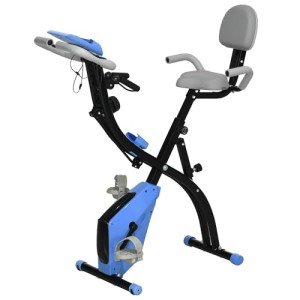The Versatility and Benefits of Stationary Bicycles
In an era where health and fitness are vital, stationary bicycles have emerged as a popular and reliable tool for maintaining physical well-being. Stationary Bike Online , typically discovered in homes, gyms, and rehab centers, provide a wide variety of benefits, from cardiovascular health to weight management. This short article dives into the multifaceted world of stationary bicycles, exploring their types, benefits, and how to pick the right one for your requirements.
What is a Stationary Bicycle?
A stationary bicycle, also called a spin bike, exercise bike, or indoor cycle, is a device designed to simulate the action of riding a traditional bicycle however in a fixed location. Unlike outside cycling, stationary bicycles provide a controlled environment that allows users to focus on their workout without the interruptions or risks of road conditions. These bikes are available in various kinds, each customized to particular fitness goals and choices.
Types of Stationary Bicycles
Upright Bicycles
- Description: These bikes carefully look like standard outside bicycles. They offer a more upright riding position, which can be easier on the back and neck.
- Best For: General fitness, weight loss, and low-impact workouts.
Recumbent Bicycles
- Description: Recumbent bikes include a reclined seating position with a back-rest, making them more comfy for extended usage.
- Best For: Users with back or joint concerns, senior citizens, and those recuperating from injuries.
Spin Bicycles
- Description: Spin bikes are developed for high-intensity interval training (HIIT) and cycling classes. They typically have a heavier flywheel for a more practical road feel.
- Best For: Athletes, fitness enthusiasts, and those searching for extreme exercises.
Dual-Action Bicycles
- Description: These bikes integrate manages that relocation with the pedals, offering an upper body workout in addition to lower body exercise.
- Best For: Full-body exercises and increased calorie burn.
Advantages of Using a Stationary Bicycle
Cardiovascular Health
- Routine usage of a stationary bicycle can considerably enhance cardiovascular health by reinforcing the heart and lungs. It helps lower the danger of cardiovascular disease, high blood pressure, and stroke.
Weight Management
- Cycling is an exceptional method to burn calories and handle weight. A 30-minute session can burn between 200 and 300 calories, depending on intensity and individual factors.
Low-Impact Exercise
- Stationary bicycles provide a low-impact workout, making them ideal for individuals with joint pain, arthritis, or other conditions that limit high-impact activities.
Mental Health
- Exercise, including cycling, releases endorphins, which are natural state of mind lifters. Routine use of a stationary bicycle can help lower tension, anxiety, and depression.
Convenience and Accessibility
- Unlike outdoor cycling, stationary bicycles can be utilized anytime, regardless of climate condition or time constraints. They are also available to individuals of any ages and fitness levels.
How to Choose the Right Stationary Bicycle
Identify Your Fitness Goals
- Consider what you wish to attain with your exercises. Are you looking to improve cardiovascular health, drop weight, or construct muscle?
Evaluate Your Physical Condition
- If you have any health issues or physical limitations, pick a bike that accommodates your requirements. Recumbent bikes are typically an excellent option for those with back or joint problems.
Assess Your Space
- Step the area where you plan to position the bike to guarantee it fits comfortably. Some bikes are more compact than others.
Think About Additional Features
- Try to find functions that improve your workout experience, such as resistance settings, heart rate monitors, and integrated workout programs.
Read Reviews and Testimonials
- Research various models and read reviews from other users to get an idea of their efficiency and resilience.
Frequently asked questions
Q: Are stationary bicycles effective for weight-loss?
- A: Yes, stationary bicycles are highly effective for weight reduction. They offer a low-impact, calorie-burning workout that can be changed to match numerous fitness levels.
Q: Can I utilize a stationary bicycle if I have knee issues?
- A: Yes, stationary bicycles are normally low-impact and can be a great option for people with knee problems. Recumbent bikes, in particular, deal additional support and are simpler on the joints.
Q: How frequently should I utilize a stationary bicycle for optimal outcomes?
- A: For optimum outcomes, objective to utilize a stationary bicycle for at least 30 minutes, 3-5 times weekly. Consistency is key to attaining your fitness objectives.
Q: Do stationary bicycles provide a full-body workout?
- A: While stationary bicycles mainly target the lower body, some models, like dual-action bikes, also engage the upper body. For a more comprehensive workout, consider incorporating other workouts.
Q: Can I utilize a stationary bicycle for interval training?
- A: Yes, numerous stationary bicycles offer resistance settings and built-in programs that are perfect for interval training. Spin bikes, in particular, are created for high-intensity period training (HIIT).
Stationary bicycles are a versatile and valuable addition to any fitness routine. Whether you are a skilled athlete or a fitness amateur, there is a stationary bicycle that can assist you accomplish your health and wellness objectives. By comprehending the various types of bikes, their benefits, and how to pick the ideal one, you can make a notified choice that will improve your general fitness journey. So, hop on a stationary bicycle and start pedaling your way to a much healthier, happier you.

